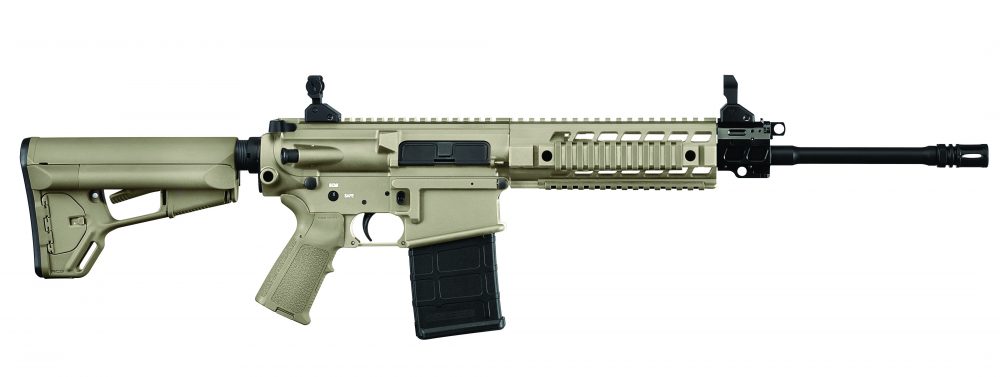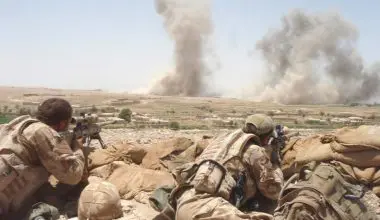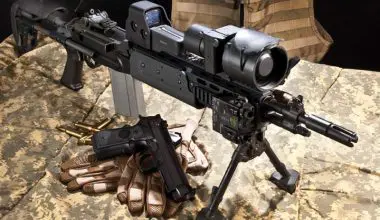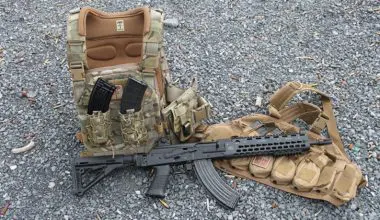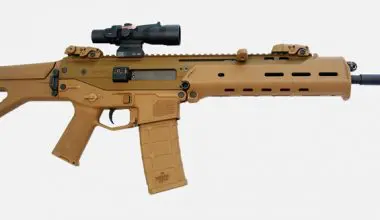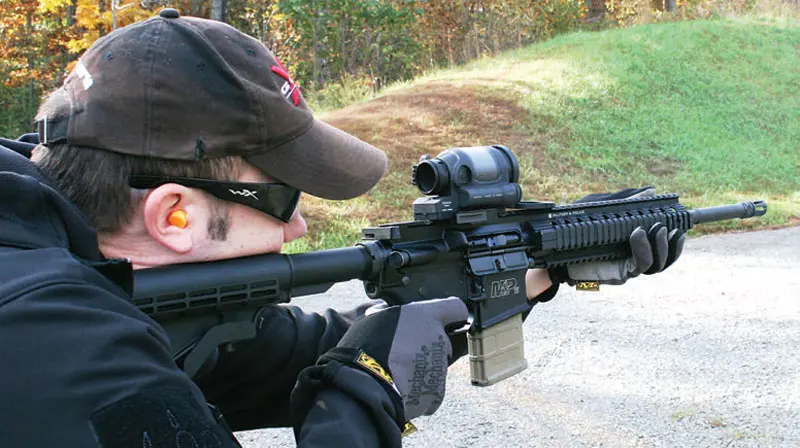
Government scandals involving a solar power company aside, the military at a number of combat installations, including Forward Operating Bases, is augmenting its fossil fuel power generation with solar panels. Most of these panels are used to charge portable electronic equipment such as radios and GPS devices, but they also save tons of fuel and reduce the number of ambushes that motor transport convoys encounter because they don’t have to make so many resupply trips via road. It costs over $100 per gallon of fuel to supply troops in Afghanistan, so solar cells provide savings there as well.
Now this technology has gravitated to electronic sighting systems. The latest is the Trijicon SRS (Sealed Reflex Sight).
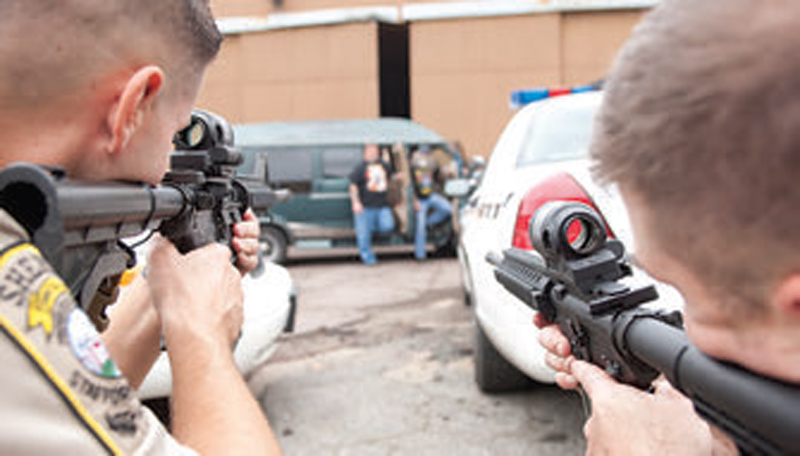
Table of Contents
100-YEAR-OLD TECHNOLOGY
Reflex or reflective sights have been around since the 1900s and have been used in military sighting systems since their invention. One of their major applications is in the heads-up displays in fighter aircraft. Simply stated, these sights are generally a non-magnifying optic that permits the aimer to look through a partially reflecting glass element and see an illuminated projection of an aiming point.
This is achieved by placing a dot, crosshair reticle or similar reference point at the focus of the lens and bouncing the image off a slanted glass plate or at the focus of a partially reflecting curved mirror. The operator, looking through the glass plate or curved mirror reflector, sees in front of him an image of the reticle that stays in alignment with the weapon the sight is attached to regardless of his eye position, removing most of the parallax error found in simple sighting devices.
BATTLEFIELD DOMINANCE
Optical sights, particularly magnified and red dot sights, have proven their value in combat and competition. They are one of the most important advancements that have given our infantry dominance of the battleground. Target identification and hit ratios have increased dramatically, to the point of primarily relegating threat neutralization to the lethality of the bullet.
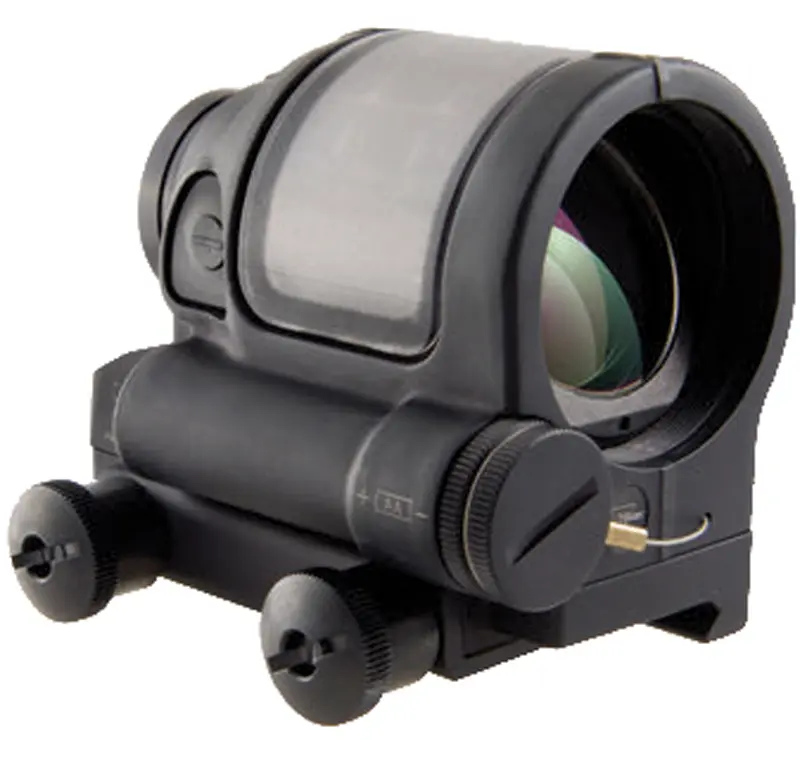
General J.N. Mattis, USMC concurs: “The ACOG optical sight mounted on the M16 service rifle has proven to be the biggest improvement in lethality for the Marine infantryman since the introduction of the M1 Garand in World War II.” When asked about current Marine Corps marksmanship, Colonel Dale Alford, commanding officer, U.S. Marine Corps Basic School, recently stated, “The Corps should get rid of iron sights on shoulder-fired weapons and go 100% to optics like the ACOG. If the optic fails, yank it off and replace it with another. Our improved hit ratios justify it completely.”
BETTER MOUSETRAP
The SRS has elevated the reflex sight to an even higher level, with its photo-voltaic cell backed up by a long-life AA battery. It is a sealed, non-magnified tactical sight with short optical length. Its forged aluminum housing is soldier tough and, with quick-detachable mount, adds less than a pound to any firearm with accessory rails.
The 38mm objective lens is the largest in the business. Its 28mm clear aperture eliminates the looking-through-a-tunnel-or-tube sensation experienced with other reflex-type sights when mounted to the shoulder.
Its 1.75 MOA dot brilliance is adjustable for ten levels of brightness for day and night operations. It will satisfy any shooting demands, from an indoor CQB scenario to returning fire from a long-range mountaintop ambush. It readily co-witnesses backup iron sights. The sight will run for over three years of continuous use at setting 10 with a single AA Lithium battery, and over 2.5 years with a standard Alkaline battery.
For combat swimmers, dive depth is 165 feet.
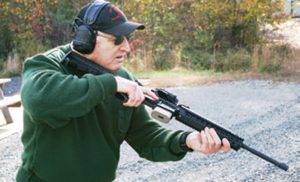
As a result of changes to requirements, the SRS will not compete for the new U.S. Army contract. Because of this, Trijicon is focusing on the law enforcement market with possible civilian applications.
FIELD TESTS
I spent almost a full day with former Marine Mike Walkowiak, Trijicon’s Operations Manager, at the company’s well-groomed Crucible ranges in Virginia.
Right out of the FedEx box, the sight was slightly right, but spot on for elevation at 25 yards mounted on an S&W M&P 15. This sight had never been on this carbine before, and it took all of six rounds to be zeroed.
At all ranges, my peripheral vision was not compromised, even with scope caps flopping around. I wear prescription lenses for distance, and it was quite refreshing and tactically prudent to wear them and witness both the threat and dot in sharp 1X focus. It is absolutely vital in law enforcement—as in any legitimate deadly force confrontation—to see what the threat is doing and what is in his hands so proper action can be taken. Target engagement at 100 yards with the SRS was so easy that it became boring, but it got interesting when laying down high volumes of counter-ambush suppressive fire.
From the century mark, we moved up to ten yards and did some pivoting and snap shooting drills. It was really cool to get a “flash dot” picture, pound two rounds into the target as fast as I could cycle the trigger, and finish with a fast hit to the head.
In the process, the dot never left the target, and reacquisition was effortless. At CQB ranges, the entire target remained in the round window. Its weight was unnoticeable and didn’t affect gun mount or swing. Although iron sights will serve well at CQB distances, the red dot seemed quicker and more prominent in contrast. The low magnification was hardly noticeable, but I am sure it made things clearer at extended ranges.
Trijicon provides free training and a test and evaluation program to the military and any federal, local, state or municipal law enforcement entity that uses their products. They can come to you or conduct the training on their excellent facilities located at the Crucible training center.
CONCLUSIONS
Reflex sights do not make an expert rifleman, but the elimination of the requirement to line up two objects on the vertical and horizontal planes and simply superimpose a brightly illuminated dot on the threat makes gun/target indexing elementary. All that needs to be exercised is a modicum of trigger control.
I can readily appreciate the new USMC practice of introducing recruits to marksmanship training with Trijicon ACOG optical sights first and then teaching them the use of iron sights as backup sighting systems as they advance. For any level of marksmanship, reflex sights will improve performance. The Trijicon SRS further elevates these capabilities with extreme precision and ruggedness.
The tactical team operators’ agency may have a moral and perhaps legal obligation to its community and personnel to acquire this hit-improving technology.
